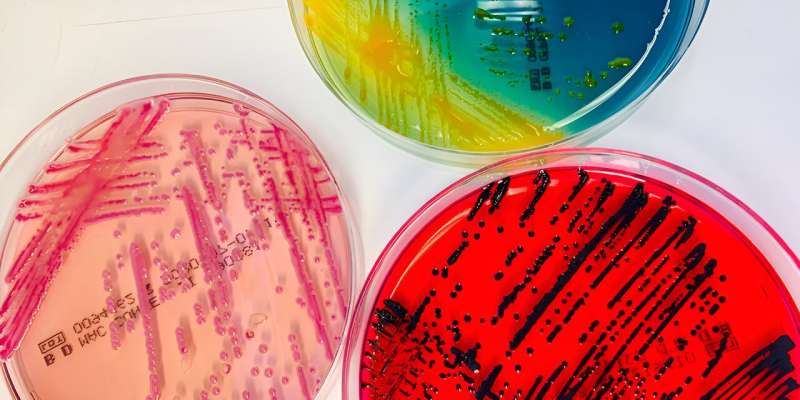This article has been reviewed according to Science X's editorial process and policies. Editors have highlighted the following attributes while ensuring the content's credibility:
fact-checked
peer-reviewed publication
trusted source
proofread
More than 30 new species of bacteria discovered in patient samples

Unknown germs are a common occurrence in hospitals. Researchers at the University of Basel have spent many years collecting and analyzing them. They have identified many new species of bacteria, some of which are significant for clinical practice.
Bacterial infections can be treated more efficiently if the cause of the disease is known. In most cases, all it takes to identify a pathogen is an analysis in a medical laboratory. Sometimes, however, the standard methods are insufficient—for example, if the species of bacteria has not yet been classified or is particularly difficult to grow.
A team from the University of Basel and the University Hospital Basel has been collecting and analyzing patient samples containing such unknown germs since 2014. The researchers have discovered more than 30 new species of bacteria, some of which are associated with clinically relevant infections. The work is published in the journal BMC Microbiology.
Complete genetic analysis
Overall, the team led by the microbiologist Dr. Daniel Goldenberger analyzed 61 unknown bacterial pathogens found in blood or tissue samples from patients with a wide range of medical conditions.
Conventional laboratory methods, such as mass spectroscopy or sequencing a small part of the bacterial genome, had failed to produce results for all these isolates. That is why the researchers sequenced the complete genetic material of the bacteria using a method that has only been available for a few years. They then compared the identified genome sequences with known strains in an online tool.
Out of 61 analyzed bacteria, 35 were previously unknown. The researchers classified the remaining 26 strains as hard to identify: either their genome sequences had only been added to databases recently or a correct taxonomic description of the pathogens had only been created a very short time ago.
An evaluation of the patient data showed that seven out of the 35 new strains were clinically relevant, meaning that they can cause bacterial infections in humans. "Such direct links between newly identified species of bacteria and their clinical relevance have rarely been published in the past," said Dr. Goldenberger.
Cause of rare infections
Most of the newly identified species belong to the Corynebacterium and Schaalia genera, both gram-positive bacilli. "Many species in these two genera are found in the natural human skin microbiome and the mucosa. This is why they are frequently underestimated, and research into them is sparse," explained Dr. Goldenberger. They can, however, cause infections when they enter into the bloodstream—due to a tumor, for example.
One of the hard-to-identify pathogens might be clinically relevant, too. It was found in the inflamed thumb of a patient after a dog bite. A Canadian research group also recently isolated this bacterium from wounds caused by dog or cat bites.
"This has led us to assume that it is an emerging pathogen which we need to monitor," said Dr. Goldenberger. The Canadian researchers appropriately named the bacterium Vandammella animalimorsus (animal bite Vandammella) in 2022.
Naming their new species is the next item on the Basel team's to-do list, too. They are working closely with Professor Peter Vandamme from the University of Ghent, a specialist in bacteria classification. Two of the bacteria have been named already. One is Pseudoclavibacter triregionum—referring to Basel's location near the borders of Switzerland, France and Germany.
The project started by Daniel Goldenberger's team is far from complete, however. The researchers continue to systematically collect and sequence unknown pathogens found in patient samples from the University Hospital Basel—another twenty-plus new species have been detected already.
"We have noticed a major dynamic here: thanks to technological advances in bacteriology, much more is being published about newly discovered species of bacteria," explained Dr. Goldenberger. This development will make it easier in future to correctly diagnose infections caused by rare pathogens and treat them effectively from the outset.
More information: Veronika Muigg et al, Novel Organism Verification and Analysis (NOVA) study: identification of 35 clinical isolates representing potentially novel bacterial taxa using a pipeline based on whole genome sequencing, BMC Microbiology (2024). DOI: 10.1186/s12866-023-03163-7
Journal information: BMC Microbiology
Provided by University of Basel




















